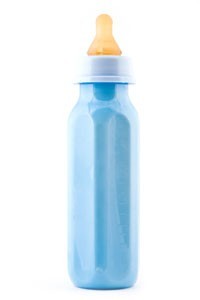
Plastic is everywhere. We eat from it, drink from it, build with it, and our children play with toys made from it. Some of us even wear it. Unfortunately, the production, use, and disposal of plastics are all fraught with serious health and environmental consequences. Since plastics won't be going away anytime soon (give or take 1,000 years in your local landfill), here are some steps you can take to use them more safely.
Plastics are manufactured from petroleum, and different types of plastics are manufactured for different type of uses. For example, some plastics are made specifically to contain foods and beverages. Others are manufactured for building. Whatever their use, most plastics are stamped with a number between 1 and 7, that codes them according to their ability to be recycled.
Note: The #7 stands for any plastics that fall outside the 1-6 code. While #7 (PLA) is safer, #7 (Other) is dangerous.
It isn't the plastics that are so bad, it's the chemicals added to them during the production process that are dangerous to our health. These additives give plastics their various characteristics, like strength, flexibility, rigidity, and so on. No plastics are completely safe to use, because all of them can leach chemical additives. Plastics coded #1 (PETE), #2 (HDPE), #4 (LDPE), #5 (PP), and #7 (PLA)* are currently considered the safest to use (at least for now), because they are the least likely to leach chemical additives into what we eat and drink.
Plastics coded #3 (PVC), #6 (PS) and #7 (Other) are the plastics to steer clear from. They all contain known or suspected carcinogens seriously detrimental to human health. Ironically, these plastics are also usually not recycled.

About The Author: Ellen Brown is an environmental writer and photographer and the owner of Sustainable Media, an environmental media company that specializes in helping businesses and organizations promote eco-friendly products and services. Contact her on the web at http://www.sustainable-media.com
Add your voice! Click below to comment. ThriftyFun is powered by your wisdom!
This article is naming alot of unsafe plasic. If it names my 5 gallon water jug as being unsafe. Is it telling me I should not use it at all?
Yeah. I make homemade pancakes and wrap them two at a time in Saran Wrap, put them in a Ziplock freezer bag, and then defrost in my microwave and enjoy eating them for breakfast.
I've been doing this for quite a long time.
I suppose I could remove the wrap first...it never looked like a problem.
Add your voice! Click below to comment. ThriftyFun is powered by your wisdom!